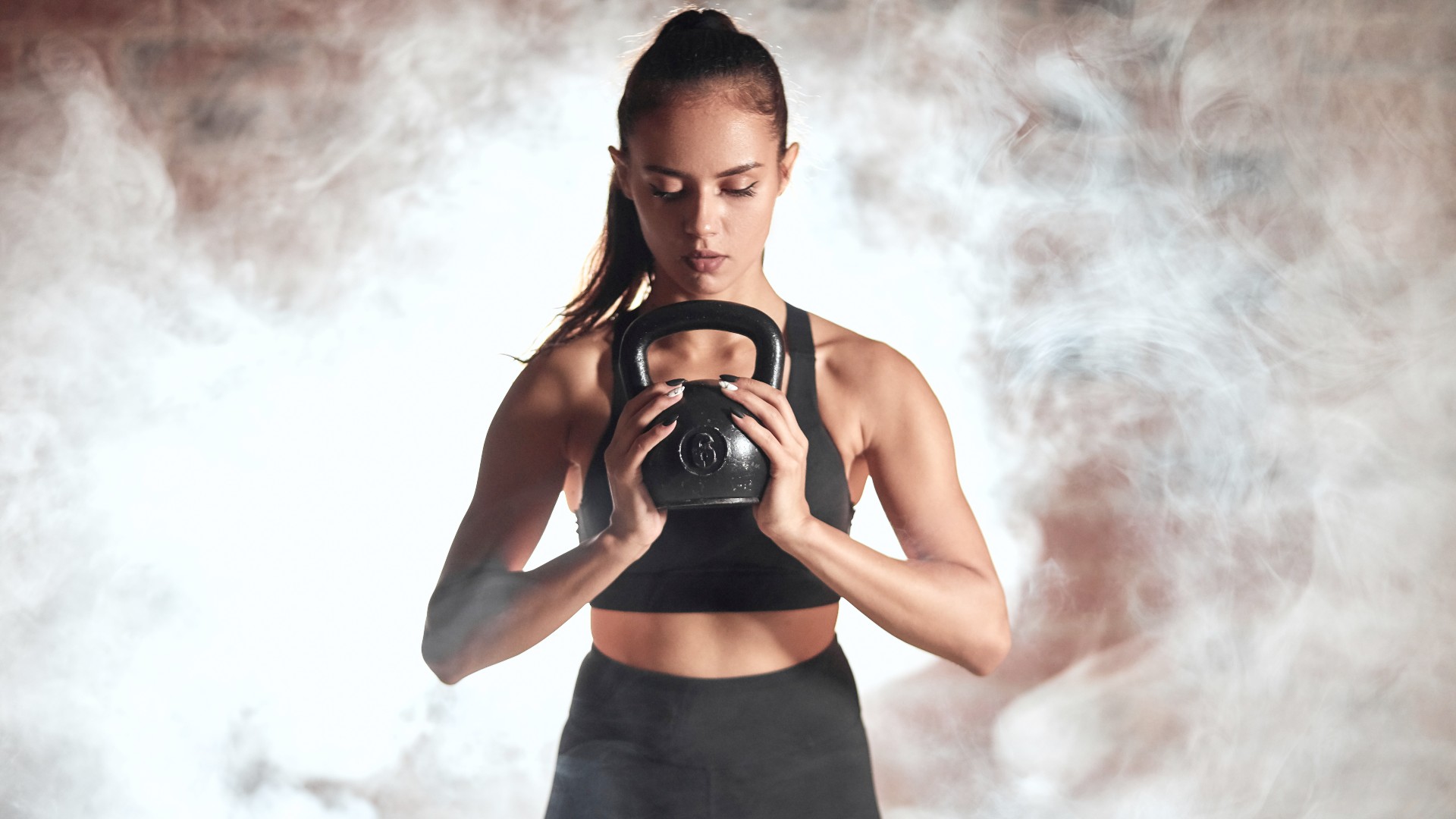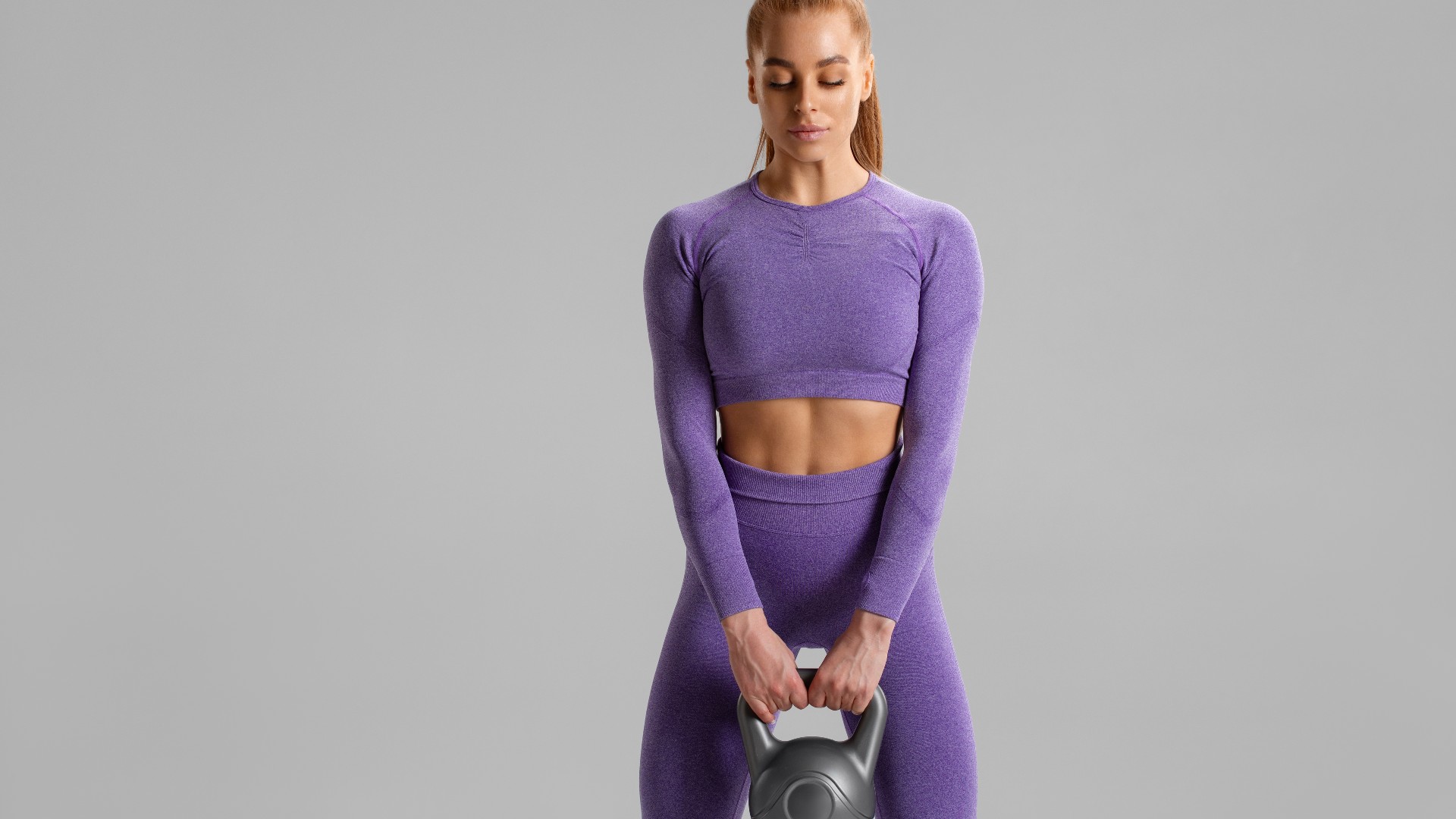
The kettlebell halo exercise topped the 5 standing ab exercises that sculpt your core with one kettlebell round-up, and there are other big benefits up for grabs when doing the core and shoulder exercise regularly, aside from hitting those obliques hard.
Holding a kettlebell overhead your head, light or heavy, can be dangerous without good technique. Below, we discuss the benefits of the kettlebell halo, common mistakes and halo variations we recommend, as well as some tips for keeping your form tight regardless of your weightlifting abilities.
As with any exercise, if you’re a beginner, pregnant, or returning from injury, we advise speaking with a medical professional or qualified personal trainer beforehand, especially if you plan to load with heavy weights.

I know — sigh — being told to scale back and seek permission first is boring. But here are 7 things I wish I’d known before I started lifting heavy weights for the first time if you’re wondering why exercising caution (before your muscles) matters. If you're ready and set to lift, grab one of the best kettlebells for weightlifting and read on for more.
Kettlebell halo: Benefits
As we mentioned, the kettlebell halo hits your shoulders and abs, but that’s not all. The upper body exercise also develops shoulder mobility by activating all three shoulder heads — anterior, lateral and posterior — the upper back, arms and various core muscles that wrap around the body, not just your abs.
Your core consists of muscles like the erector spinae that hug the spine, the transverse abdominal muscles — a deeper layer of muscles that sit like a belt beneath your abs, and even extend to include your hip flexors and glutes. Building strength in your torso will help keep you safe and protected during heavy lifting and everyday tasks, so we love this exercise for developing core and shoulder stability and strengthening some of the many muscles responsible for posture.
How to do kettlebell halos
How:
- Hold your kettlebell upside down by the horns and grip them tight to help activate your wrists, arms, upper back and shoulders.
- Brace your core and squeeze your glutes to create a stable base.
- Press the kettlebell overhead and check you’re not arching your back or leaning forward.
- From here, begin rotating the kettlebell in circles around your head with bent elbows.
- Once the bell travels in front of your face, change direction. Maintain a soft knee bend and move with control.
Kettlebell halo: Common mistakes
Kettlebell halos target the arms, shoulders, upper back and core, strengthening the muscles in your upper body. Doing them wrong could lead to injury, so these are the most common mistakes we recommend avoiding.
Arching the back
It’s common to see people push their hips forward and arch their backs under heavier loads. Try squeezing as many muscle groups as you can to create a strong pillar for the kettlebell to move around. Slightly tuck your pelvis without hunching over. An arched back indicates a lack of core engagement or that you’re lifting too heavy, so focus on keeping your stomach braced and chest proud and choose a weight you can control.
Moving with straight arms
Your elbows should be bent during kettlebell halos so that you can rotate the bell around your head rather than above it. Ensure you have enough bend in your elbows to allow full control of the weight at all times.
Grip
There are a few ways to grip the kettlebell during halos, but we recommend holding it by the horns with the bell upside down. You could also grip the bell itself with the handle facing upward if you prefer, but ensure you have a secure position on the kettlebell.
Unlike the bottoms-up kettlebell press, using both hands will help stabilize the weight with far less risk of falling. You can learn how to hold a kettlebell properly with some grip techniques explained by a master kettlebell coach. Either way, avoid flaring your elbows outward and keep the bell close to your body.
Kettlebell halo: Variations
There are several ways to progress or scale back.
Experiment with different grips and weights to find a challenging kettlebell halo variation for you. You could also try the halo sitting or kneeling to challenge your core stability more, removing your legs from the equation. For some people, using a bench or chair can provide extra support for the back, but for others, sitting or kneeling unsupported adds challenge.
You can also add exercises to the kettlebell halo by lunging or squatting as you rotate the bell. If your coordination is lacking, move into a low lunge or squat hold, then rotate the kettlebell from a holding position; this combines isometric (non-moving) with isotonic (moving) contraction and ramps up demand on your core muscles.
If you don’t feel confident controlling the kettlebell above your head, our fitness editor did 50 kettlebell Around The Worlds a day for a week — here’s what happened. She circled the bell around her hips instead, which helped work the arms and abs, improve grip strength and engage the upper body.







